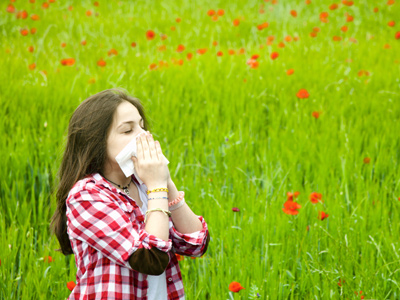If you have studied the lymphatic system you learned that it is a type of internal trash collector system. It literally sucks up metabolic garbage, toxins and excess fluids that are found in every organ. If the flow in removing this excess fluid and toxins becomes clogged, the fluid will become thick and create a breeding ground environment for infections. If an infection does occur, the body’s immune system then kicks in.
The immune system is designed to fight against literally millions of different varieties of tiny parasites, toxins, viruses, bacteria and microbes (collectively known as pathogens). Its first line of defense is to create a wall to prevent any harmful pathogens from entering into the body. This first line of defense is the skin.
The second line of defense is sneezing. Yes, sneezing. Sneezing is a means of dispersing any pathogens out of the body.
If a pathogen does get in, it is attacked to weaken it. Part of this attack is the fever. Most pathogens cannot survive long in heat. By the body warming up, most pathogens will be killed off before causing too much harm. The heat also prevents pathogens from reproducing in the body.
There are 8 major components that make up the immune system. These components are:
1. The Thymus: This is a thin, flat gland that secretes the hormone thymosin which then stimulates the activity of the lymphocytes. It also produces thymic or T-cells or T-lymphocytes. The thymus is largest in small children and then completely disappears in adults.
2. Spleen: The spleen’s function is to form blood, store blood and filter blood. It controls and negates harmful bacteria that has found its way into the bloodstream. If the spleen has to be removed in children, they will be more susceptible to infections whereas adults are not as adversely affected.
3. The Lymphatic System: The lymphatic system, as previously stated, is a type of filtering system. It helps to clean the body of cellular debris.
4. Bone marrow: Bone marrow is a soft organic material that fills the cavities of bone. It is the source of all blood cells. Bone marrow can be donated and transplanted without causing any harm to the donor.
5. White blood cells: White blood cells are also known as leukocytes. There are two types of leukocytes. These include the Granulocytes which have granules in their cytoplasm (cell gook) and the Agranulocytes which are leukocytes that lack granules in the cytoplasm. Granulocytes include neutrophils, segmented neutrophils, basophils and eosinophils. Agranulocytes include lymphocytes and monocytes.
6. Antibodies: Antibodies protect us from pathogens/antigens. All antibodies belong to a special group of serum proteins called immunoglobulins. Once someone has been affected by an antigen, the body develops its own antibodies. Some antibodies are given through vaccinations.
7. Complement system: This is a series of enzymatic proteins found in normal blood that will seek out and destroy many types of bacteria and other foreign cells.
8. Hormones: Hormones are substances that originate in one area of the body and can affect other areas of the body. They use the blood stream to travel around the body.
The immune system is such an advanced system that it can actually detect early stages of cancer and fight the cancer off. Regardless of how well the immune system works, however, it can always use a little help. Ways that you can help your own body’s immune system is to get plenty of rest, eat well, exercise and avoid places and people you know to be currently infected with pathogens.
Now that you have had a review of the human immune system, let’s see just how much you can remember about it. Move over to the quiz questions and see just how many of the ten questions you will be able to find the correct answer for.








